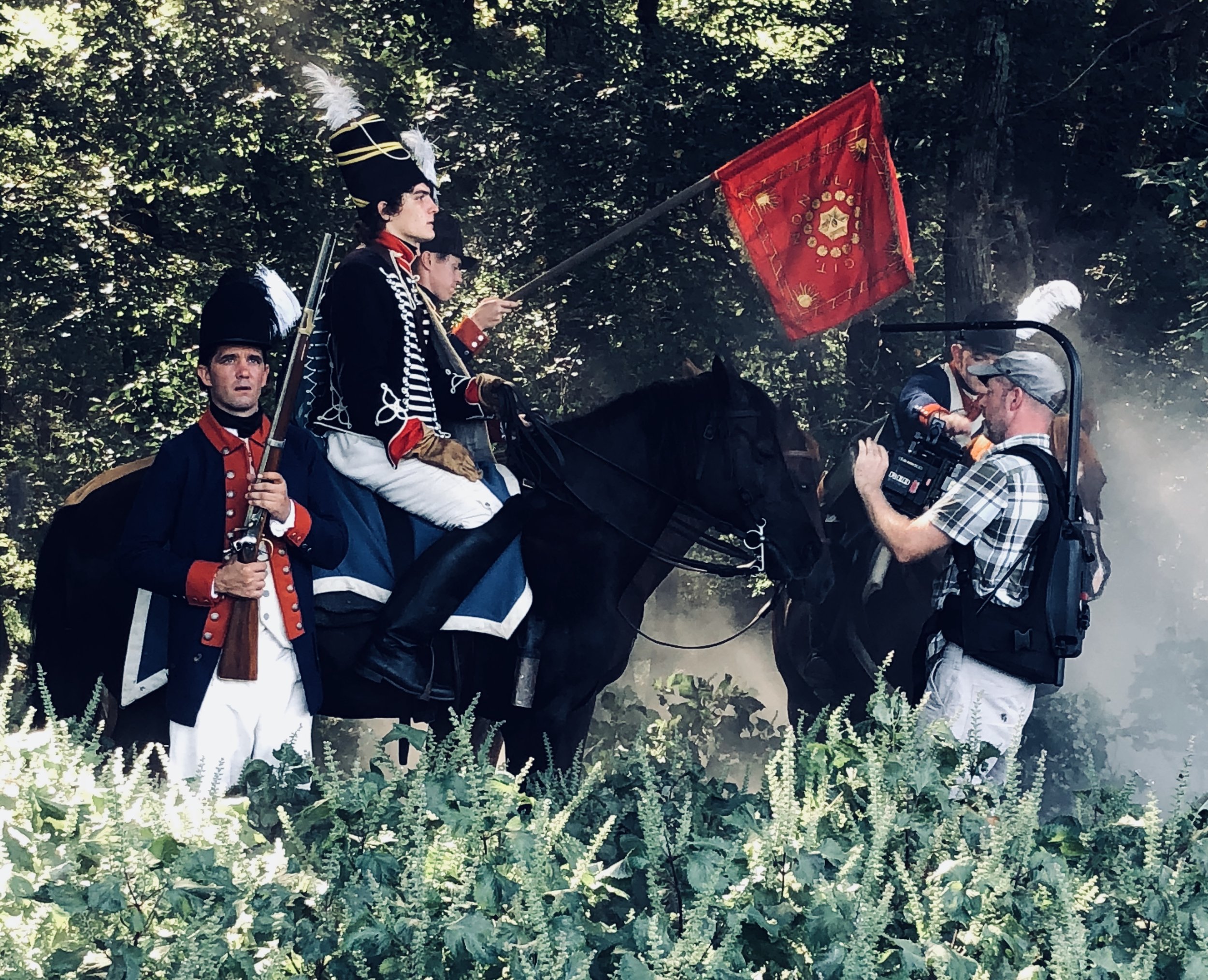Cavalry Reenacting
Reviewed 2024
U.S. Civil War Cavalry Reenacting brings people who are like-minded in their interest in Civil War history and their love of horses together to recreate, to the extent possible, the lives and times of soldiers and civilians and their experience of war during the 1860s.
Our reenacting unit represents a company of U.S. Regular Army Cavalry, a company of Confederate Virginia Cavalry active during the American Civil War, and a troop of Light Dragoons active during the American Revolution. We study essays, letters, diaries, commentaries, pictures, reports, maps, memoirs, documentaries, biographies, muster rolls, regimental returns, and anything else that educates us about the cavalry during these periods. We try to look right by wearing and using well-made reproductions of original uniforms, weapons, equipment, and other items used at the time. We adopt military courtesies and learn and use the drill and tactics of the period.
Prepared in this way, we participate in battle reenactments, living histories, tactical events, and campaign rides. Battle reenactments and living history events usually occur over weekends, where we set up and live out of static camps. Tactical events and campaign rides can last several days, often in very austere conditions. We also sometimes support parades and films. Below is a description of the activities that our hobby encompasses.
Battle Reenactments
trevilian station va battle reenactment
These are the events for which reenactors are most well-known. Event organizers often try to plan these events on or near the original battle site, as close as possible to the historic day and month of the action. Reenactments can vary in size from a handful of mounted troopers at small local events to several hundred at the most well-known battles. Reenactments are most often combined arms events where Cavalry, Infantry, and Artillery are all present on the field, though some of our events are Cavalry only. Small or large, combined arms or cavalry-only, they test our knowledge of drill and tactics and demand a certain level of horsemanship.
Gettysburg pa reenactment dismounted fighting
The scenarios are often scripted, and the outcome is usually well-defined, but the activity can be an absolute blast. We've participated in events with anywhere from 50 to 20,000 total participants from all across the U.S., sometimes from Canada, and for the “really” big ones (Gettysburg 150th, for example), sometimes from the United Kingdom and Australia. At the larger reenactments, in addition to the battle demonstrations, sutlers often set up mobile shops to sell clothes, equipment, and other items with a Civil War theme.
Living History
ft monroe, va
Most frequently done in cooperation with the National and State Park Services, we demonstrate mounted drill and tactics common to the cavalry in the 1860s and re-create cavalry camp life. These events focus on education rather than battle reenactments but demand the same level of horsemanship and knowledge of drill. We have a strong relationship with the National Park Service at Gettysburg and Fort Monroe and several state park services, and we regularly portray Civil War Cavalry as part of their scheduled educational programs.
talking with visitors at a living history event
At a typical Living History, we’ll perform four or five mounted drill demonstrations throughout the weekend. Sometimes, we engage in lighthearted competition by “Running the Heads,” a test of skill where troopers gallop their horses at targets – in our case, apples or cabbage – trying to hit them with sabers. It’s harder than it looks! We welcome visitors to our camp, and our troopers, along with our families and unit members, portray civilians and recount what life was like for camp followers and others connected to the military. We’ve also done presentations for schools, bed & breakfasts, and the United States Military Academy at West Point.
Tactical Events/Campaign Rides
cavalry horse taking a break during the red river campaign ride
These events can last a few days to a week and are not usually open to the public because we’re living out of the saddle and on the move. They are frequently based on an actual event that occurred during the Civil War and can be somewhat scripted. However, each side’s leadership often develops strategies and takes unplanned actions to surprise and besting their opponents.
don stivers - “Never a COMPLAINT”
Campaign rides allow us to experience how the cavalry lived, if only for a few days. We ride across country, tackle varying terrain, sleep on the ground, take the weather as it comes, and live mainly with what we can carry in the saddle. Afterward, we’re dirty and smelly, sore from riding, stiff from sleeping on the ground, and in absolute awe of what cavalry troopers endured every day they served.
Ceremonies and Parades:
We also occasionally participate in parades or historic ceremonies, bringing the Cavalry to Main Street America. We’ve participated in parades in Yorktown, VA; Philadelphia, PA; and Washington, DC.
The 2nd u.s. in washington, dc
The 2nd u.s. in Philadelphia
Films and Documentaries:
Finally, we sometimes support films and documentaries with our cavalry impression. Some of our members helped make the documentary “Averell’s Raiders and the 35th Star” (averellsraiders.com) and "Gift from a Yankee" (2016), and Trooper Amos is carrying the guidon in the National Geographic Magazine photo. Additionally, four of our unit members participated in the Smithsonian documentary about General Pulaski as part of their “American Hidden Stories” series.











